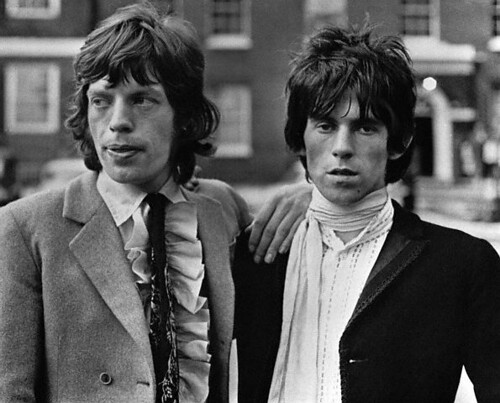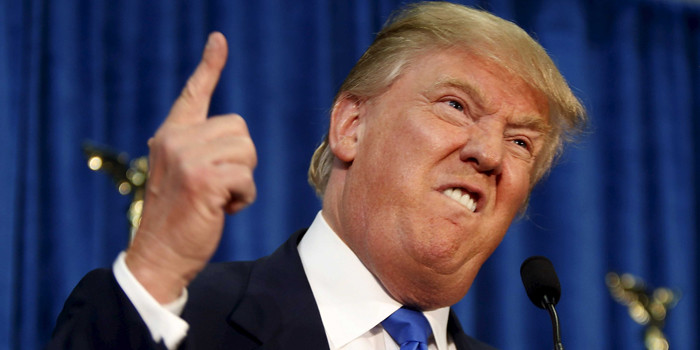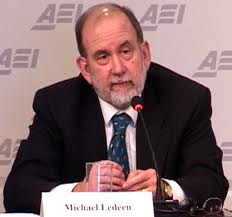The origins of the Teapot Dome scandal began around 1909 when Navy administrators began converting their fleet from coal powered ships to oil powered ships. As more ships were converted, Navy officials became concerned about the possibility of oil running out (an occurrence many Peak Oil deniers point to as a means of dismissing the notion it could ever happen). The Navy asked Congress to set aside federally owned lands where oil deposits existed for protected reserves that would not be used except during a federal emergency. Two of the three reserves, set aside in 1912, were in Elk Hills and Buena Vista Oil Fields in Kern County, California. The other oil reserve set aside was Teapot Dome in Natrona County, Wyoming in 1915.
The corruption that lead to scandal officially started with newly inaugurated President Warren G. Harding switching responsibility of these oil reserves from Navy to Secretary of Interior through Executive Order 3474 on May 31, 1921. The Secretary of Interior was Harding's poker-playing buddy Albert Bacon Fall, who was a Senator from New Mexico until President Harding appointed him in March 1921. It was Fall who actually wrote the Executive Order that Harding signed. Once these oil fields were under Fall's control, he made secret deals with two powerful oilmen, Harry F. Sinclair of Mammoth Oil, a subsidiary of Sinclair Oil Corporation, and Edward L. Doheny of Pan American Petroleum and Transport Company. Fall leased oil production rights to Doheny for the Elk Hills reserve and Sinclair for Teapot Dome. Though both leases were issued without competitive bids, this was not illegal at the time. What was illegal was the bribes of more than $400,000 that Fall accepted from Doheny and Sinclair for these leases.
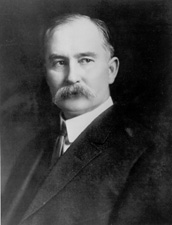
Albert Bacon Fall, Secretary of Interior convicted of bribery Photo courtesy of Wikimedia Commons
When independent oilman and future Democratic Governor of Wyoming Leslie Miller observed Sinclair trucks hauling drilling equipment into Teapot Dome, he was suspicious enough to ask Democratic Senator John B. Kendrick to look into it. On April 15, 1922, Kendrick introduced a resolution calling for an investigation into the deal. The leader of the investigation through the Senate Committee on Public Lands was Republican Senator Robert La Follette. La Follette was a Progressive who would later launch a third party run for President in 1924. Any suspicions La Follette may have had regarding the corruption involved in this deal would only have intensified after the quarters of his Senate Office Building were ransacked.
Ultimately, leadership of the inquiry fell to the most junior minority member of the committee, Democratic Senator Thomas J. Walsh of Montana, in October 1923. By then, Fall had resigned from his position in January 1923, after delivering truckloads of documents to bury the investigators in a mass of paper. At first, it seemed that there was no evidence of wrongdoing. But Walsh's tenacity in investigating the leads proved that a cover-up was hiding the truth behind Teapot Dome. Ironically, the cover-up involved the Washington Post. As Chalmers M. Roberts wrote on June 9, 1977, "One of the oddities of the two scandals - Teapot Dome in the Harding administration and Watergate in the Nixon administration - was the reversed roles played by The Washington Post. In the case of Teapot Dome it was The Post's publisher who at first covered up for Fall until a probing senator caught him in a lie; in the case of Watergate The Post was awarded a Pulitzer Prize for its public service in tracking down and exposing the wrong-doing."
The cover-up concerned a $100,000 "loan" that Fall received in late 1921 while he was the Secretary of the Interior. Fall denied on the witness stand that the money was for compensation for the oil leases. It seemed that when Fall's personal friend, Washington Post publisher Edward Beale (Ned) McLean, told Walsh's committee that he had loaned Fall the money, the trail had dried up. But because McLean had stayed in Palm Beach, Florida, saying that a sinus condition prevented him from traveling to Washington to testify publicly, Walsh was suspicious and came down to Florida to interrogate him directly. With the possibility of a perjury charge hanging over him, McLean admitted the truth: he hadn't lent Fall the money at all. It turned out that the money came from Pan American Petroleum and Transport Company head Edward L. Doheny, who had suggested to Fall that he get McLean to say he lent the money.

Edward L. Doheny Courtesy of Wikimedia Commons
At this point, the Teapot Dome scandal exploded. President Calvin Coolidge, who came into office after the sudden death of President Harding on August 2, 1923, appointed two special prosecutors, Republican lawyer and future Supreme Court Justice Owen J. Roberts and former Democratic Senator Atlee Pomerene, to take over the investigation. Though Walsh originally thought some of McLean's coded messages implicated Coolidge in Teapot Dome, Roberts and Pomerene were unable to find evidence to confirm a criminal conspiracy went up that high. They were able to file a total of eight cases, two civil and six criminal. Two civil cases to cancel the disputed oil leases went to the Supreme Court; in both the Elk Hills and Teapot Dome oil fields both leases were voided in 1927 and production was shut down. The criminal cases only resulted in one conviction: Albert Fall was convicted of accepting the bribe from Doheny, the first Cabinet member convicted of a crime committed while in office, and sentenced to one year in prison and fined $100,000. Amazingly, Doheny was never convicted for any crime; in 1930 he was acquitted of offering the same bribe that Fall was convicted for, which lead one reporter to observe, "You can’t convict a million dollars." The only other person to serve time in the Teapot Dome scandal besides Fall was Harry Sinclair, but not for the bribe: he was sentenced to nine months and served six months in jail for contempt of Congress and for hiring detectives to trail members of the jury in his original bribery trial for which he was acquitted.
While the number of convictions in this scandal pales in comparison to Watergate, Teapot Dome does share a notorious feature with it: a bizarre body count. It's a popular misconception that nobody died from Watergate. In addition to Nixon's Watergate operation linking back to his treasonous campaign sabotage of President Johnson's 1968 Paris peace talks that needlessly extended the death toll of the Vietnam War, there is also the curious matter of the plane crash of United Airlines Flight 553 on December 8, 1972. 43 of the 55 people aboard were killed, including Dorothy Hunt, who was carrying $10,000 in $100 bills when the plane crashed. She was the wife of E. Howard Hunt, who organized the Watergate break-in. On that date, prior to boarding the doomed flight, Dorothy, who had also been a CIA employee, had a meeting with CBS journalist Michelle Clark, who was working on a Watergate story, along with Chicago Congressman George Collins. All three were killed in the subsequent plane crash. FBI agents arrived at the scene of the crash before the Fire Department, which is suspicious considering the Fire Department received a call within one minute of the crash. One FBI agent confiscated a tape from the Midway Airport control tower that reportedly contained information of error or sabotage regarding Flight 553. The day after the crash, a new Undersecretary of Transportation, who would supervise the two agencies investigating the crash - the National Transportation Safety Board (NTSB) and the Federal Aviation Association (FAA) - was appointed by President Nixon. This was White House aide Egil Krogh, who would later plead guilty and serve four and a half months in prison for his role in the Watergate conspiracy.
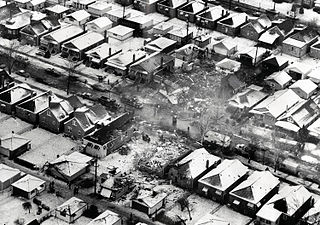
Crash site of doomed Flight 553 which killed Dorothy Hunt Photo courtesy of Wikimedia Commons
There were two verifiable murder victims connected with Teapot Dome. They were Theodore "Hugh" Plunkett and Edward L. Doheny Jr., known to the family as Ned. Plunkett was a chauffeur for the entire Doheny family and was Ned's personal secretary and great friend, though one associate, Fredrick R. Kellogg said, "their relationship was more than that of friends." Ned and Hugh's connection with Teapot Dome was very direct: in November 1921, they were the literal bagmen who delivered a small black bag filled with $100,000 to Albert Fall at the Wardman Park Hotel in Washington D.C. In May 1924 during his father's trial for conspiracy, Ned refused to answer questions about his role in delivering the money, but testified he and his father did nothing wrong. Doheny Sr. was acquitted of that charge in 1926, but was later charged with bribery. By the fall of 1928, both Ned and Hugh were called to testify in the upcoming bribery trials of Fall and Doheny. But while Ned would have received immunity for his testimony, Hugh did not receive the same assurance.
Amidst all this, the Doheny family was moving into the 55 room mansion built on 429 Beverly Hills acres called Greystone which Hugh Plunkett had overseen the construction of while Ned was supporting his father through the Teapot Dome scandal in Washington. Supposedly on Christmas Eve, Hugh suffered a "nervous breakdown" and on the afternoon of February 16, 1929, Ned, his wife Lucy, and the family Doctor Ernest Fishbaugh urged Hugh to enter a sanitarium. We'll never know if this was just to get him mental help, to exempt him from testifying, or both, but Hugh refused. Later that evening, both Ned and Hugh were found dead in a Greystone bedroom, both with a single shot to the head. Though the official story was that Hugh murdered Ned, then committed suicide, there was plenty of contradictory evidence, such as false information from witnesses, and forensic investigator Leslie White's observation that Ned was shot at close range, while Hugh was not. Since there was never an official inquest and District Attorney Buron Fitts declared the investigation closed, what actually happened will remain a mystery. Greystone mansion still exists today and ironically was used as a filming location for the Paul Thomas Anderson film There Will Be Blood, which was based on the Upton Sinclair novel Oil!, which many say was inspired by the rise to power of Edward L. Doheny Sr.
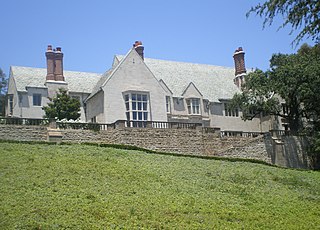
Greystone Mansion in Beverly Hills, CA Photo courtesy of Wikimedia Commons
So how do these monster political scandals of the 20th century stack up to current events? There are some striking similarities where crime, cover-up and curious deaths compare to the crazy cacophony surrounding Donald John Trump. There is certainly much debate, which will continue at least until Special Counsel Robert Mueller wraps up his investigation, about whether Trump and Russia colluded to steal the election, which is the primary charge among many leveled against him. But even if that treasonous possibility doesn't pan out, the connections between the Trump campaign and Russia could encompass such corruption that crimes such as money laundering, perjury and obstruction of justice were committed by Trump and members of his campaign.
That there has been an active cover-up by Trump and his administration to obfuscate their machinations is fairly irrefutable. Even if you defer judgment until Mueller completes his investigation on precisely what Trump meant when he told then FBI director James Comey regarding the agency's investigation into ousted national security advisor Michael Flynn that, "I hope you can let this go," that is hardly the only instance where a cover-up attempt backfired with Team Trump. The most recent example is their reaction to the revelation of a meeting between Donald Trump Jr., Paul Manafort, Jared Kushner and a Russian lawyer, among others that occurred June 9, 2016. Originally when the New York Times broke this story on July 8, 2017, their response was coordinated (and dictated by Donald J. Trump Sr.) to only admit that the topic of adoption was discussed. The following day, when the New York Times revealed five sources confirmed Trump Jr. agreed to the meeting on the basis that dirt on Hillary Clinton would be given to him, their cover story fell apart.
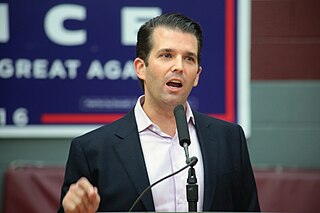
Donald Trump Jr. Photo courtesy of Wikimedia Commons
While the depth, severity and criminality of this scandal should probably be explored more thoroughly once the investigation is complete, there is one curious death tied to the Trump/Russia scandal that deserves closer scrutiny. Republican operative Peter W. Smith was quite active during the 2016 presidential campaign, according to two explosive reports from the Wall Street Journal. Smith was trying to obtain stolen Hillary Clinton emails from hackers he assumed were affiliated with the Russian government. He presented himself as working with top Trump adviser Lieutenant General Michael Flynn, both in his solicitations to the Russian hackers and his interview with the Wall Street Journal on May 4, 2017. Ten days later, but six weeks before the Journal's story went to print, Peter W. Smith was found dead on May 14, 2017.
The Minnesota state death record said 81 year old Smith killed himself and was “found with a bag over his head with a source of helium attached” in a hotel in Rochester, Minnesota. There was a suicide note recovered by police stating that there was "NO FOUL PLAY WHATSOEVER" and that he took his own life because of a "RECENT BAD TURN IN HEALTH SINCE JANUARY, 2017" and because he had a policy of "LIFE INSURANCE OF $5 MILLION" about to expire. In my research, I have yet to verify whether his policy would actually pay out for a suicide. It's hard to believe his wife and three kids (with three grandkids) really needed that money, considering he had spent more than 40 years in the lucrative field of directing private equity firms in corporate acquisitions and venture investments. More pertinent to my doubt, I have yet to verify if he actually signed the all cap suicide note or not. The only recent bad turn in health attested to by one of Smith's former employees is a heart condition. But Smith was getting treated for this condition at the nearby Mayo Clinic, which shows he was interested in getting better. The Wall Street Journal writer who interviewed him, Shane Harris, says he saw no indication of bad health or suicidal behavior.

Vladimir Putin and Donald Trump Photo courtesy of Business-Gazeta
What has been the Trump administration's reaction to the curious case of Peter W. Smith? They told the Wall Street Journal that "if Mr. Flynn coordinated with him in any way, it would have been in his capacity as a private individual." The problem with this non-denial denial that Smith was working for the Trump campaign is that his relationships with members of Team Trump are not limited to Flynn and his son. In his efforts to seek out the hacked emails, Smith told potential collaborators that he was working "in coordination to the extent permitted as an independent expenditure" with Sam Clovis, Steve Bannon and Kellyanne Conway, as well as Flynn. Bannon denied hearing of Smith, even though Matt Boyle, the Washington Political Editor of Breitbart, the publication run by Bannon until he left to join the Trump campaign, collaborated with Smith in an effort to force out Paul Ryan as House Speaker, a cause shared by Bannon. Kellyanne Conway at least admitted to knowing him while claiming she hadn't spoken to him recently. How did she know him? Well, one way would have been through her husband, George Conway. That relationship goes back almost two decades. George was one of the "elves" working on the Paula Jones lawsuit against Bill Clinton. Smith funded the lawsuit; he paid Arkansas state troopers to tell stories that they procured women for then-Governor Clinton in what was dubbed Troopergate, which lead to the Paula Jones case. Smith has one other tie with a Trump campaign adviser going back two decades: Newt Gingrich. Peter W. Smith donated more than $100,000 to Gingrich's controversial GOPAC political fund from 1989 to 1995, which made him the "No. 1 financial backer of Mr. Gingrich."
Whether all these ties with the tumultuous world of Trump lead to Smith's demise cannot be conclusively determined yet. What does seem conclusive, looking over this seamy scope of history, is that the more they try to cover up the truth, the more they lose control.

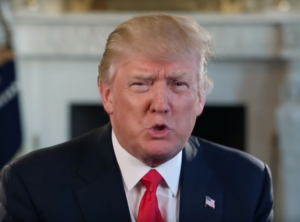

 Pacific Electric "Red Cars" lined up for destruction Image courtesy of
Pacific Electric "Red Cars" lined up for destruction Image courtesy of 